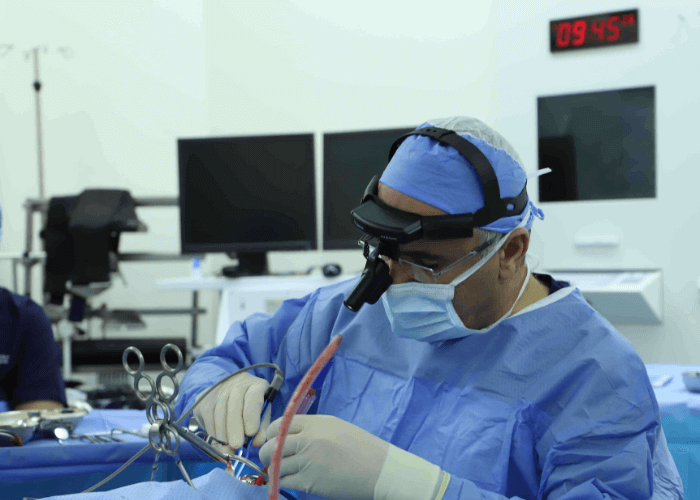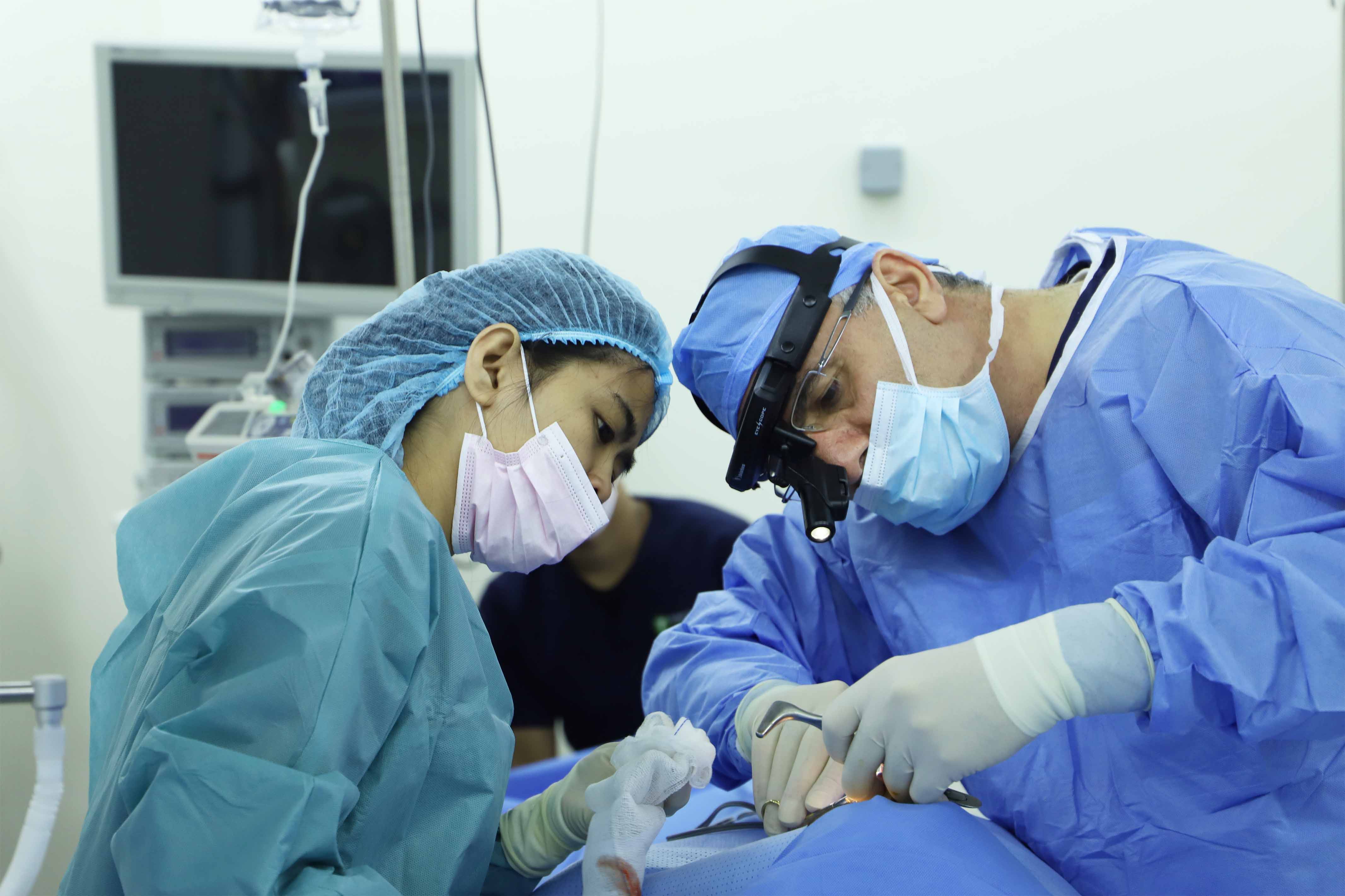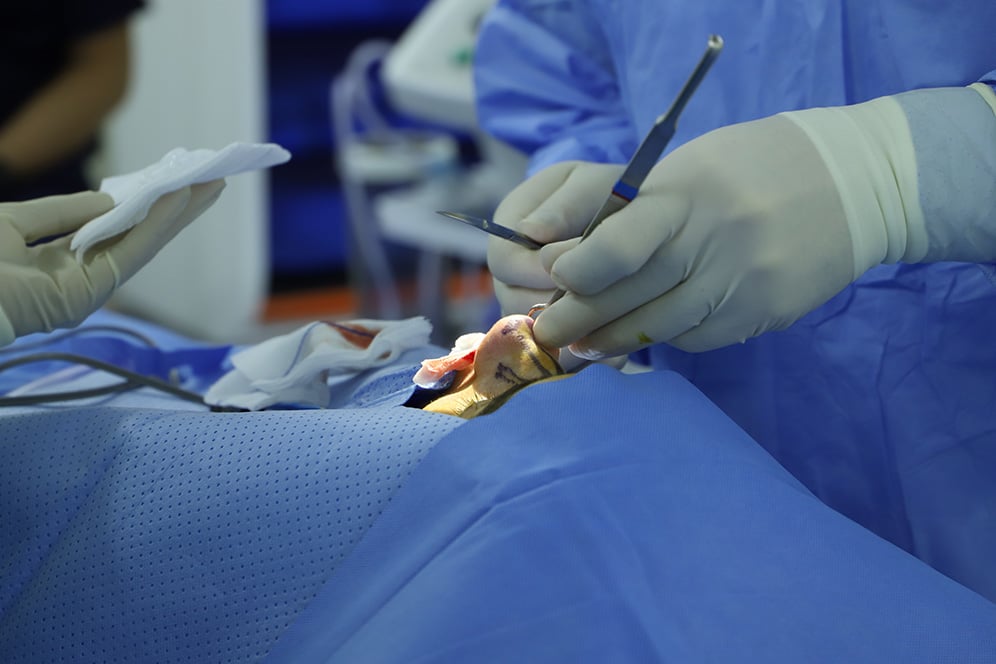Tonsillotomy - DRHC Dubai ENT Clinic
Tonsillotomy involves removing a part of the tonsil lymphoid tissue, leaving the capsule intact. The technique is reminiscent of what was historically called guillotine tonsillectomy. Techniques include microdebrider, laser, or, most recently, radiofrequency ablation (CoblationR).
The amount of tissue removed can range from just the lymphoid tissue up to the anterior tonsillar pillar to leaving a cuff of tonsil tissue lining the tonsillar fossa, to taking the tissue back to the capsule (sometimes called intracapsular tonsillectomy).
These techniques, particularly Coblation tonsillotomy, have only recently started being trialled. Earlier studies have used the technique when tonsils, for example, need to be debulked in young children with obstructive sleep apnea, but it was thought it might be desirable to leave some functioning lymphoid tissue.
Some studies have already shown that recovery-related outcomes (days until pain-free, secondary hemorrhage rate) for intracapsular tonsillotomy were better than for total tonsillectomy in children with obstructive symptoms.
In some parts of the world, such as Scandinavia, tonsillotomy has now become the most common operation performed for obstructive symptoms and has become more common than tonsillectomy.
The fact that the muscle is disturbed less than in tonsillectomy may explain why post-operative pain can be reduced.
Pain:
Significant morbidity is associated with tonsillectomy. Post-tonsillectomy, sore throat is normal for at least 1 week, and on average, return to school or work can take 1–2 weeks. Various articles have been written on the management of post-tonsillectomy pain.
Peri-operative complications:
If the mouth is opened too widely during the tonsillectomy operation, the patient may experience temporomandibular joint dysfunction. Dissection beyond pharyngeal musculature can lead to injury to the glossopharyngeal nerve and, rarely, the carotid sheath. Non-traumatic atlantoaxial subluxation (Grisel syndrome) can occur secondary to any inflammatory process in the neck.
Bleeding
Bleeding after tonsillectomy can be primary (within 24 hours after the operation) or secondary (after 24 hours until 2 weeks). The NPTA reported that the readmission rate for bleeding was 4.57%, with 1.44% requiring a return to theatre. The most likely explanation for secondary bleeding is infection with streptococcus in the granulating tonsil bed. Treatment depends on the severity and potential cause of the bleeding. Antibiotics are advised for secondary bleeding. Severe primary or secondary bleeds need to be controlled in theatre.
Infection:
The first symptoms of post-tonsillectomy infection are fever and halitosis. Treatment should be administered according to the severity.
Peri-operative Management
Post-tonsillectomy morbidity can be minimized by skilled anesthesia, analgesia, antiemetics, and steroid treatments.
Anesthesia and Analgesia:
In the UK, the technique used by anesthetists is very variable. Total intravenous anesthesia with propofol and remifentanil leads to a fast wake-up, and propofol is a helpful antiemetic agent. Using inhalational agents for intubation obviates the need for muscle relaxants and speeds up the reversal process.
Adequate analgesia is important in the immediate postoperative period. Narcotics have a potent emetic effect and should be used with caution. Paracetamol is the drug of choice as it is safe and efficacious. Non-steroidal anti-inflammatory drugs (NSAIDs) have been shown to cause significantly less postoperative nausea and vomiting than narcotics. Also, concerns that the effect of these drugs on platelet adhesion might increase bleeding from the tonsil bed have been unfounded.
Recent guidelines have suggested that codeine should not be used in children after tonsillectomy. Also, aspirin should not be used in children because of the risk of Reye syndrome. Studies have reported on injecting long- and short-acting local anesthetics pre- or post-operatively into the tonsil beds. There is no current evidence to suggest any significant benefit from the use of these techniques.
Steroid treatment:
The use of pre-operative glucocorticoids has gained wide acceptance. A Cochrane review has shown that a single intravenous dose of dexamethasone was an effective and relatively safe treatment for reducing morbidity from pediatric tonsillectomy. Some more recent studies have confirmed that a single dose of dexamethasone at induction reduces the early incidence of nausea, vomiting, and the level of pain postoperatively.
Post-op antibiotics:
Using antibiotics prophylactically after tonsillectomy has been looked at in various studies. A Cochrane review of these studies published in 2012 advocated against the routine use of antibiotics after tonsillectomy.
Day-case surgery:
Tonsillectomy as a day-case procedure is gaining popularity. The main reasons for patients to stay overnight are the risk of bleeding and associated morbidity from pain and vomiting. Day-case tonsillectomy in children has been demonstrated by numerous studies to be a safe alternative to surgery as an inpatient.
Recently, a study has demonstrated the safety of adenotonsillectomy as a day-case procedure for children with mild obstructive sleep apnea in a tertiary unit.
The tonsillectomy surgical package is available via the following link: Tonsillectomy package
.png?width=281&height=59&name=bookanappointment%20(1).png)
Dubai ENT clinic - If you are in search of an ENT specialist in Dubai, then DRHC provides experienced and leading ENT doctors in Dubai for healthy treatment. To book your appointment, please call +97142798200 today!




.png?width=281&height=59&name=bookanappointment%20(1).png)
.jpg?width=1080&height=1080&name=DR%20HATEM%20(1).jpg)



